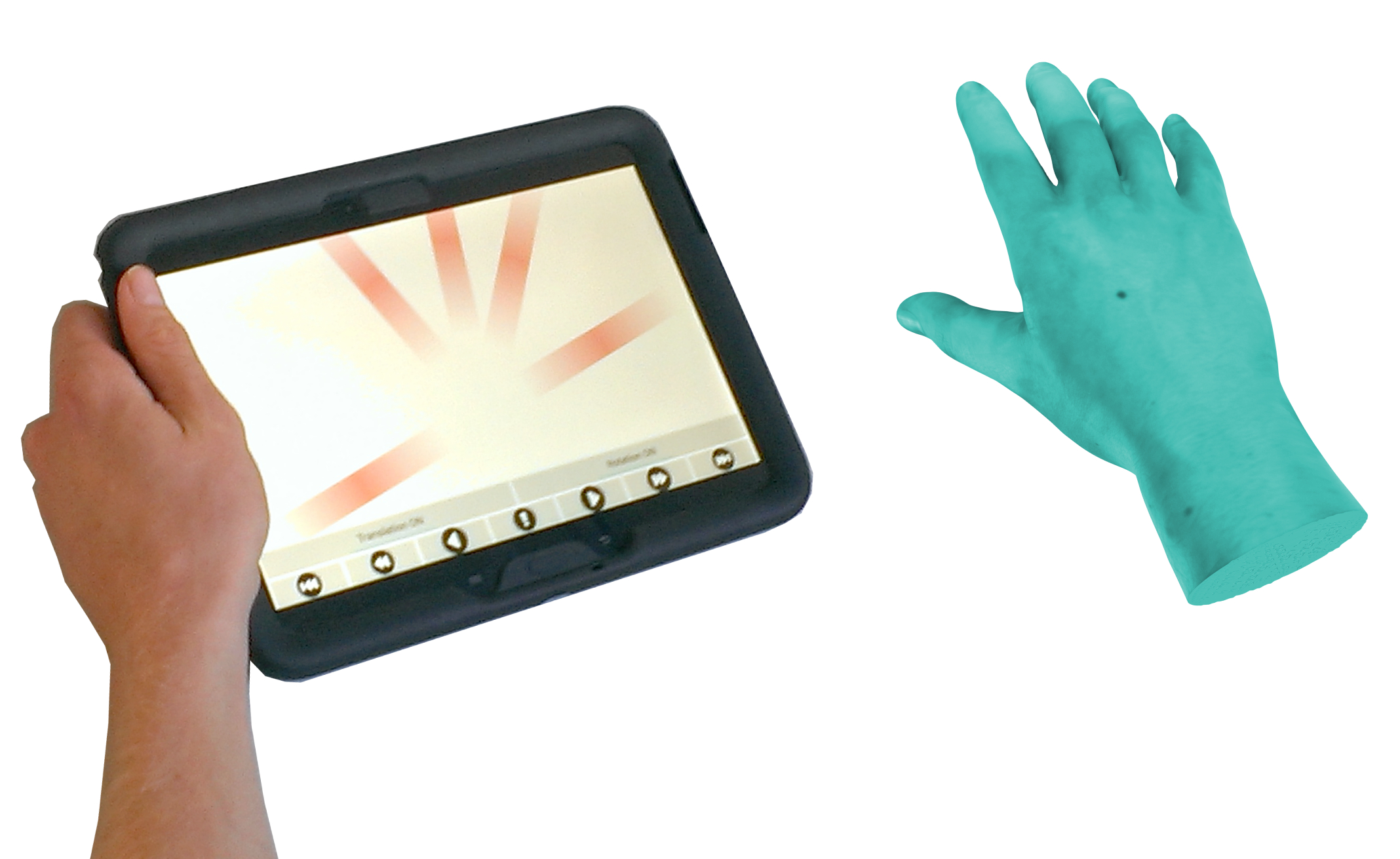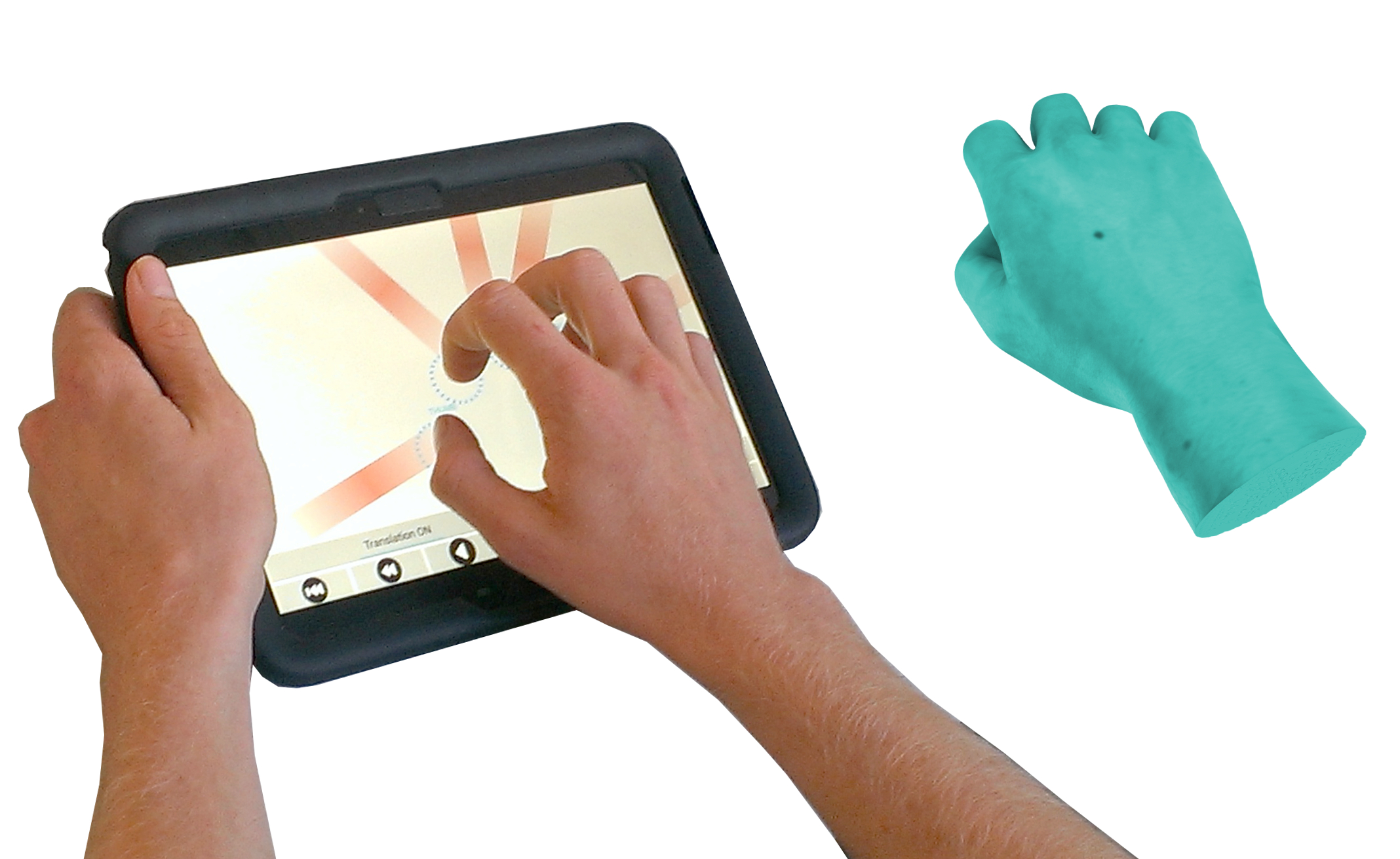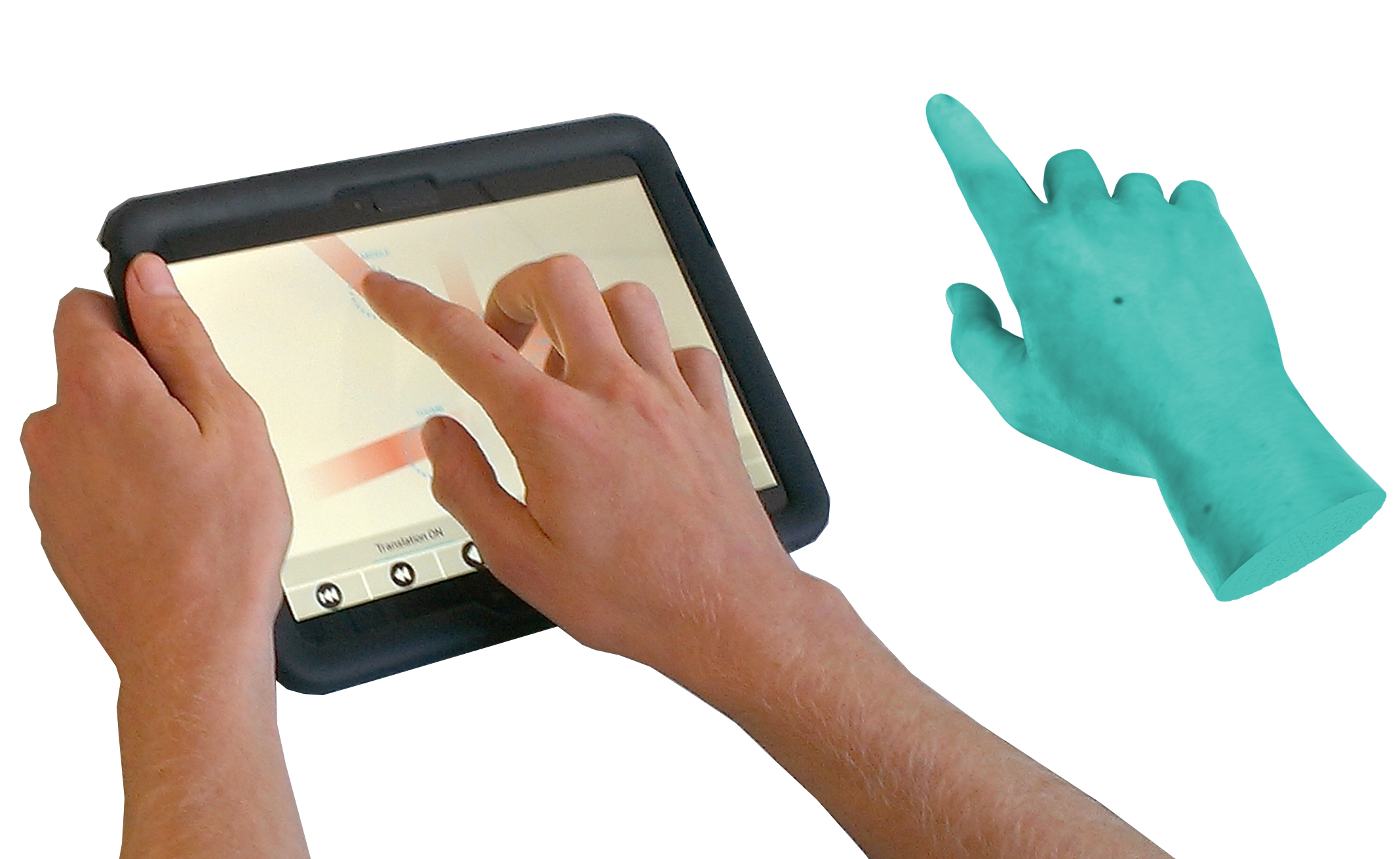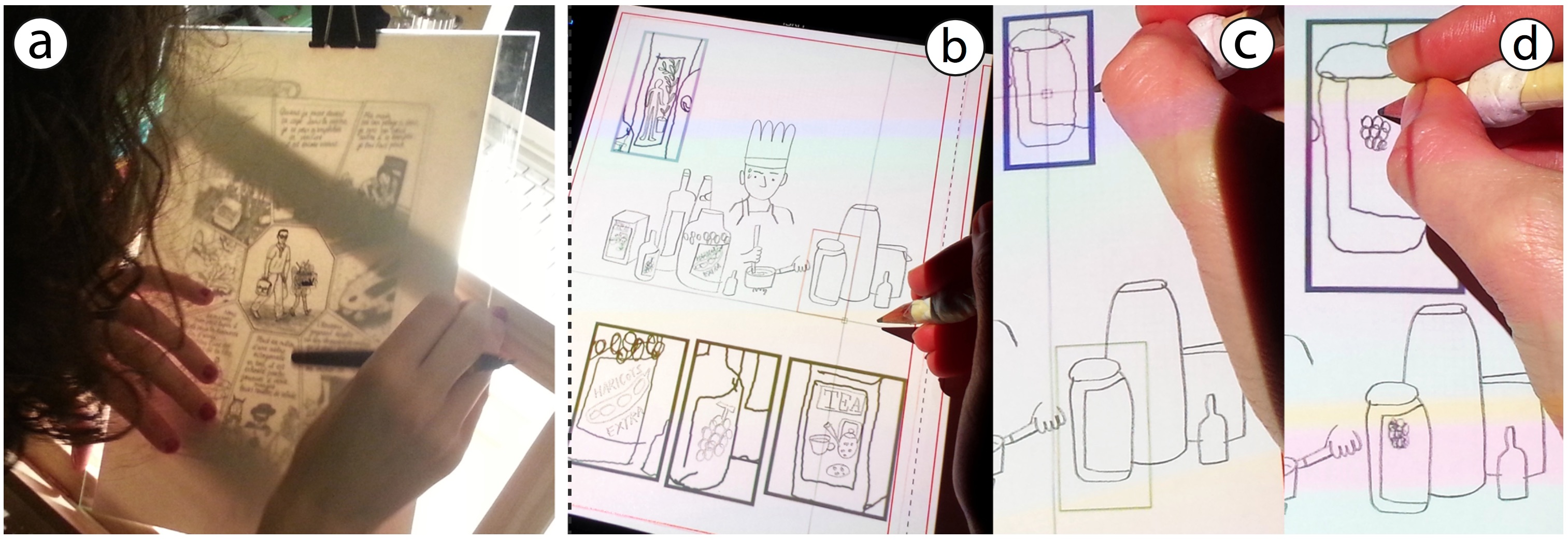Section: New Results
Interaction techniques
Participants : Géry Casiez, Stéphane Huot, Sylvain Malacria.
While touchpads are both widespread and expressive input devices, there has been surprisingly little research regarding how they could be used for more than simple pointer movements. In [17] , we explore the design space of gesture shortcuts on touchpads and introduce four novel interaction techniques. SpotPad and LociPad rely on one-finger static gestures, but differ in their graphical representation. ChordPad relies on two-finger static gestures with a hierarchical representation. Finally, InOutPad relies on dynamic gestures crossing the edges of the touchpad. We compare the properties of these four interaction techniques and describe how they can be deployed on OS X.
The hands of virtual characters are highly complex 3D models that can be tedious and time-consuming to animate with current methods. In [14] , we introduce THING, a novel tablet-based approach that leverages multi-touch interaction for the quick and precise control of a 3D hand's pose. The flexion/extension and abduction/adduction of the virtual fingers can be controlled individually for each finger or for several fingers in parallel through sliding motions on the tablet. We describe two variants of THING: MobileTHING, which maps the spatial location and orientation of the tablet to that of the virtual hand, and DesktopTHING, which combines multi-touch controls of fingers with traditional mouse controls for the hand's global position and orientation. We also report on two usability studies in which we compared THING to mouse-only controls and a data glove.
|
Interactive technologies have radically changed the way visual artists work, and a large portion of the artistic production has now moved from paper to the computer. However, many artists still work on paper and keep using traditional painting and drawing tools. This is not only due to resistance to progress or due to the well-known usability properties of physical tools: despite the use of pen displays, the progress of artistic stroke-rendering techniques, and the powerful and advanced functionalities of existing computer tools, they fail to fully capture the richness and variety of artistic styles supported by physical media. We interviewed four professional illustrators in their work environment. We also followed the work of an artist for a two-year period. We observed that artists mix a variety of techniques that involve specialized computer software and hardware such as Adobe Photoshop, a graphics tablet and a scanner, and traditional physical tools such as pencils, paper, and customized light tables. Our findings inspired BricoSketch [25] , an augmented paper interface that enables illustrators to zoom into parts of their drawings and work at different levels of detail on paper. Our early results show that BricoSketch supports real tasks, improving productivity on paper while enhancing illustrators' creative ways of working.
|






